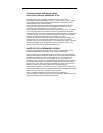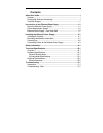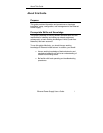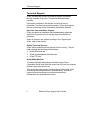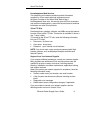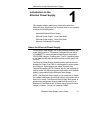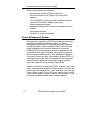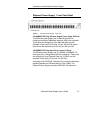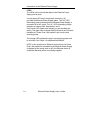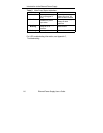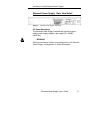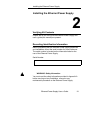
Introduction to the Ethernet Power Supply
1-2 Ethernet Power Supply User s Guide
Ethernet Power Supply main features:
- Remote power feeding of Ethernet terminals
- No need for terminal s AC outlets, UPS and AC/DC
adapters
- 24 10/100BASE-TX data plus power-combined channels
- Universal 100-240VAC, 50/60Hz power input
- Power management system
- Independent overload and short-circuit protection for each
channel
- Port status indications
- Standard 19 1U rack mountable
Power Management System
The total power required by PDTEs may exceed the total power
available from the Ethernet Power Supply. The Power
Management System does not allow the total power output to
exceed the maximum power available (200W). When the total
power available is near maximum, attempts to connect an
additional PDTE to an empty port causes the appropriate LED
of the port to blink orange, indicating out-of-power budget and
this port does not deliver power. Power distribution is based on
first-come, first-served logic. Disconnection of other PDTEs or
dropping the power use down on connected PDTEs so that the
maximum power allowed for a single port is again available
allows the connection of the new port automatically.
Should connected and operating PDTEs suddenly raise their
power requirements significantly during operation, such that the
power required exceeds the power available, the Ethernet
Power Supply begins to turn off ports starting from port 24
down until the power is again inside the limit available. These
ports resume operation when power is again available.



